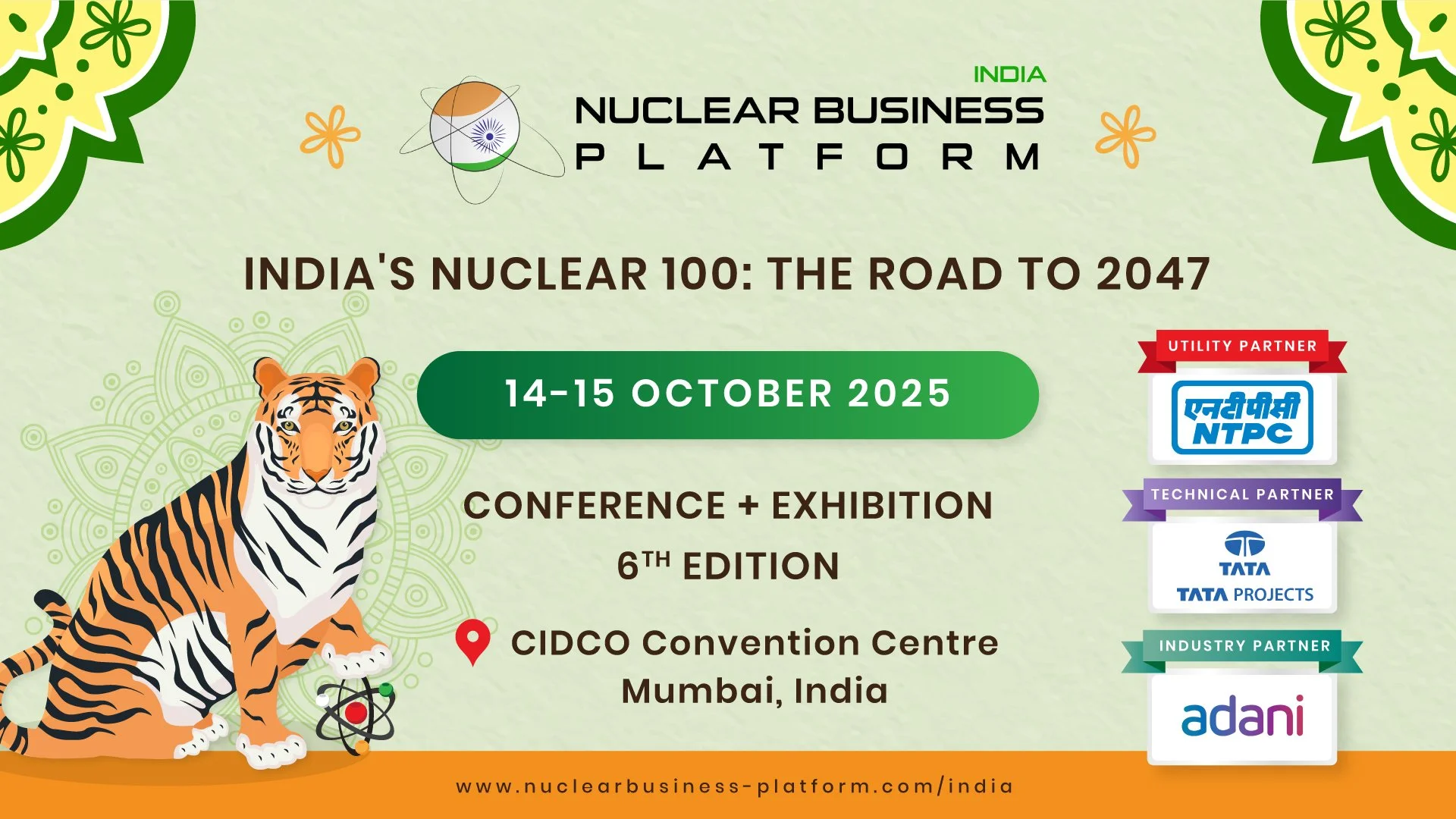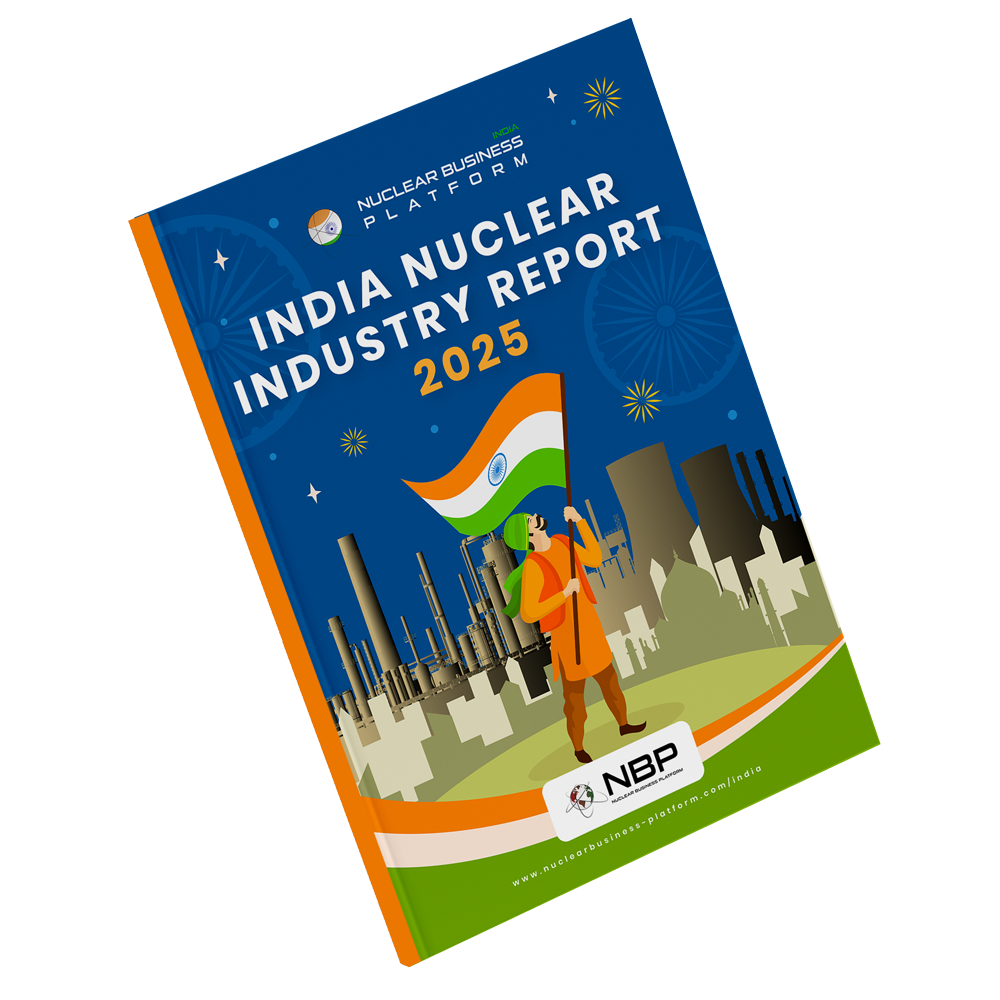India’s Coal-to-Nuclear Revolution: Turning Smokestacks into Powerhouses
What if the answer to India’s nuclear energy goals is hidden in the smokestacks of its past? As the country sets its sights on achieving 100 GW of nuclear power capacity by 2047, a new approach is taking shape: repurposing retired and retiring thermal power plants into nuclear power sites. Rather than viewing these aging coal facilities as stranded liabilities, India is working to transform them into the foundation for a cleaner, more secure energy future. This Coal-to-Nuclear (C2N) strategy offers a structured and efficient pathway to expand nuclear capacity by utilizing existing industrial land and infrastructure, supporting national goals of energy security, climate responsibility, and sustainable development.
The Brownfield Pivot: Strategic Rationale for Coal-to-Nuclear (C2N) Conversion
The C2N strategy represents a direct and pragmatic solution to the "gridlock" of conventional nuclear development. By shifting focus from virgin greenfield sites to developed brownfield locations—specifically, retiring thermal power plants—India can systematically dismantle the very obstacles that have historically constrained its nuclear ambitions.
In a move that signals a fundamental reorientation of its nuclear expansion strategy, the Indian government has preliminarily identified 10 old or decommissioned thermal power plant sites for potential conversion into nuclear power facilities. This initiative is not an ancillary plan but a core component of the roadmap to achieve the 100 GW capacity target under the Viksit Bharat 2047 vision.
A dedicated site selection committee, comprising experts from NPCIL, is currently conducting rigorous technical assessments of these shortlisted sites. The evaluation criteria are stringent, focusing on nuclear-specific safety parameters such as seismic stability, hydrological conditions, water availability, and proximity to populated areas. The Wanakbori thermal power station in Gujarat, with its seven 210 MW units, is one of the sites that has already undergone a preliminary inspection, indicating that the process is actively underway.
The Overwhelming Advantages of a Brownfield Approach
The strategic rationale behind the C2N pivot rests on compelling advantages that address the main weaknesses of the greenfield model. The most significant benefit is bypassing the land acquisition bottleneck. By using large, existing industrial land parcels, C2N largely eliminates the need for new, often contentious land acquisition processes—the single biggest cause of project delays and public opposition in the past.
Equally important is leveraging critical existing infrastructure, dramatically cutting both project costs and construction timelines. While the headline figure of up to 35% in capital cost savings (2022 U.S. Department of Energy report) is impressive, the real value lies in de-risking the entire project lifecycle. By reducing unquantifiable risks tied to land acquisition and infrastructure development, the C2N strategy makes nuclear projects more predictable, bankable, and appealing to private capital needed for scaling up. Key reusable assets include:
Grid Connectivity: High-voltage transmission lines and switchyards already exist and are grid-connected. Building this from scratch for a new plant is a multi-year, capital-intensive process.
Water Access: Thermal plants need vast amounts of water for cooling. C2N sites have established cooling water intake and discharge systems, saving on new construction and complex environmental permits.
Civil Infrastructure: Existing access roads, administrative buildings, warehouses, and railway sidings can be repurposed, further cutting costs and timelines.
The Technological Synergy: Why SMRs are the Perfect Fit for C2N
The government’s C2N strategy is closely tied to its parallel push for a new generation of reactor technology: Small Modular Reactors (SMRs). It is actively exploring SMR deployment at converted thermal plant sites, with Bhabha Atomic Research Centre (BARC) developing India’s indigenous SMRs.
This synergy between C2N and SMRs is strategic. The two policies are interdependent: C2N sites offer ideal, ready-made locations for India’s first SMR fleet, while SMRs provide the technological solution best suited for brownfield conversions. This symbiotic relationship delivers a clear, integrated, and scalable roadmap for nuclear expansion. SMRs (typically under 300 MWe) and Bharat Small Reactors (BSRs)—based on proven 220 MWe Pressurized Heavy Water Reactor (PHWR) technology—are technically well-suited for brownfield sites due to several key characteristics such as smaller footprints, factory-based construction, flexible siting, enhanced safety etc.
Underscoring this commitment, the government has allocated Rs. 20,000 crore for the research, development, and deployment of at least five indigenous SMRs by 2033.
Unlocking Commercial Value: A Granular Analysis of Business Opportunities
The shift to a Coal-to-Nuclear (C2N) model not only de-risks India’s nuclear expansion but reshapes the commercial landscape into a multi-layered ecosystem worth hundreds of billions of dollars. This change welcomes a diverse range of domestic and international players across the entire project lifecycle—from site preparation to long-term operation.
1. The Emerging Decommissioning and Site Remediation Market: Before repurposing a thermal plant site for nuclear use, legacy coal infrastructure must be safely decommissioned. Historically ad-hoc in India, this is evolving into a structured, large-scale industry. Decommissioning costs are estimated at USD 50,000–150,000 per MW of capacity. With many aging coal plants, this translates into a multi-billion-dollar market. It enables a “circular economy” for power assets, where a coal plant’s end-of-life marks the start for a nuclear facility. Key opportunities include:
Plant Demolition and Dismantling: Safe removal of boilers, chimneys, and large structures.
Hazardous Waste Management: Handling and disposal of asbestos and industrial chemicals.
Scrap Metal Recovery and Asset Valuation: Maximizing salvage value of retired assets.
Environmental Site Remediation: Cleaning contaminated soil and water, especially legacy coal ash ponds.
2. The Expanded EPC and Infrastructure Market: C2N creates a dual-phase market for Engineering, Procurement, and Construction (EPC) firms: first, decommissioning the old plant; second, constructing the new nuclear facility. NPCIL has shown clear intent to engage the private sector in large-scale nuclear construction. For example, Megha Engineering & Infrastructure Ltd (MEIL) won an INR 12,800 crore (~USD 1.5 billion) EPC contract for Kaiga Units 5 & 6, competing with giants like L&T and BHEL. This marks a shift away from a purely public sector monopoly. The focus on SMRs and BSRs at C2N sites will create a specialized EPC market with needs distinct from large, monolithic reactors:
Factory Fabrication of Modules: Manufacturing reactor components in controlled environments.
Logistics and On-site Assembly: Transport and assembly of large modules at the site.
System Integration: Merging the new nuclear island with both repurposed and new components of the conventional island (steam-electric generation).
3. The Nuclear Supply Chain Ecosystem: Reaching 100 GW of nuclear capacity requires a deep, robust domestic supply chain, offering massive opportunities for component manufacturers. The Indian nuclear power equipment market is projected to grow from USD 1.54 billion in 2024 to USD 2.31 billion by 2033.
Component Manufacturing: Demand will cover both nuclear and conventional islands. High-value opportunities include critical nuclear-grade components like reactor pressure vessels, steam generators, control rod drive mechanisms, and specialized pumps and valves. On the conventional island, while some infrastructure can be reused, many existing steam turbines can’t be directly repurposed due to technical mismatches (lower temperature and pressure steam from nuclear reactors). This drives demand for new, appropriately designed turbines and generators.
The Fuel Cycle Value Chain: India’s ambitious program boosts demand across the entire nuclear fuel cycle:
Uranium Supply: India’s low-grade domestic reserves make extraction costly. The country will continue importing uranium from Kazakhstan, Canada, and Australia, securing a stable, long-term market for global suppliers.
Advanced Fuel Fabrication: The move toward Fast Breeder Reactors (FBRs) and SMRs creates demand for specialized fuels like Mixed Oxide (MOX) fuel (plutonium-uranium mix) for FBRs and potentially High-Assay Low-Enriched Uranium (HALEU) for certain SMR designs. This opens a high-tech market for firms with expertise in advanced fuel fabrication.
Reprocessing and Waste Management: India’s closed fuel cycle policy reprocesses spent fuel to extract valuable materials for reuse. This requires continuous investment in reprocessing facilities and long-term solutions for high-level waste disposal, creating opportunities for specialized technology and service providers.
Is This India’s Novel Nuclear Solution?
India’s goal of installing 100 GW of nuclear power by 2047 is both bold and essential, meeting the dual challenges of national energy security and global climate commitments. To achieve this ambitious target, the country is embracing open-minded, flexible strategies, ready to adopt the most effective solutions to fast-track progress.
Within this vision, the Coal-to-Nuclear (C2N) strategy stands out as India’s most practical, scalable, and economically compelling pathway. By making smart use of existing land and infrastructure, C2N addresses the persistent challenges of land acquisition and project delays that have long hindered the sector. Combined with the parallel development of Small Modular Reactors (SMRs), this brownfield approach offers a transformative opportunity to turn a legacy of carbon-intensive assets into a foundation for clean, reliable, and secure power for generations to come.
The feasibility of this transition is already being demonstrated globally. A flagship example is TerraPower’s Natrium advanced reactor in the United States, currently under construction near the site of a retiring coal plant in Kemmerer, Wyoming. The project stands as a compelling example of a “Just Transition,” with a key focus on sustaining the local economy of this historic energy-producing community—ensuring long-term support and revitalization for decades ahead.
Meanwhile, India’s nuclear strategy is evolving. Historically dominated by state-owned enterprises like NPCIL and BHAVINI under the Atomic Energy Act of 1962, the sector is now opening to private and foreign investment. Proposed amendments to the Civil Liability for Nuclear Damage Act (CLNDA) 2010, announced in the Union Budget 2025–26, aim to cap supplier liability and set time-bound claims. This critical reform removes a longstanding barrier for international vendors and signals India’s commitment to aligning its liability framework with global norms, creating a genuinely welcoming environment for private investors and global firms.
In this context, the upcoming 6th India Nuclear Business Platform (INBP) 2025, scheduled for 14–15 October in Mumbai, emerges as the most effective gateway for engagement. By bringing together senior government officials, policymakers, NPCIL leadership, and private sector stakeholders under one roof, INBP 2025 offers unmatched access to insights, networks, and actionable opportunities for those looking to participate in India’s evolving nuclear landscape. Together, these steps signal a new era for India's nuclear sector—one defined by collaboration, innovation, and a shared commitment to a cleaner, more secure energy future.



